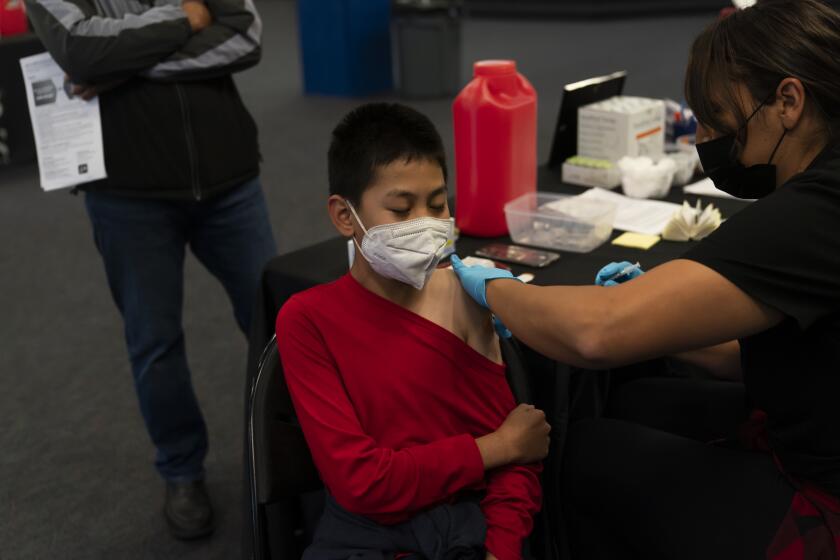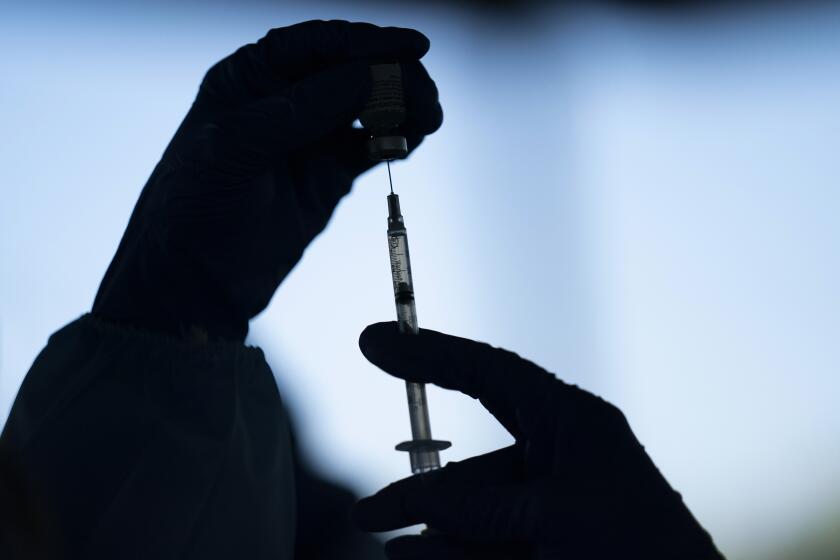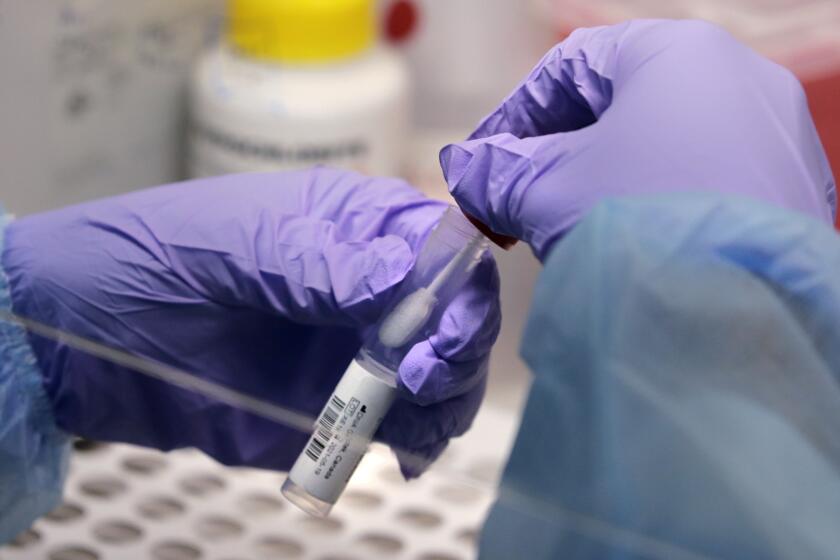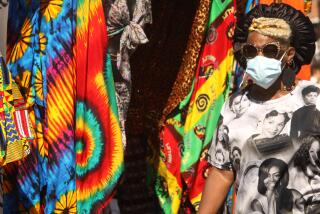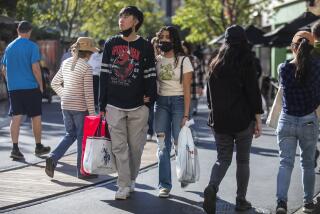L.A. County has no plans for an Omicron lockdown

No significant new coronavirus-related restrictions are planned in Los Angeles County following the emergence of the Omicron variant, a top health official said Tuesday.
“At this moment, we have really, I think, sensible precautions in place,” Public Health Director Barbara Ferrer told the county Board of Supervisors.
L.A. County’s existing COVID-19 rules are already among the strictest in the state. They include a blanket mandate for residents to wear masks in indoor public spaces, regardless of whether they’ve been vaccinated.
The county also requires patrons and employees of indoor bars, wineries, breweries, distilleries, nightclubs and lounges to show proof that they’ve been fully vaccinated for COVID-19. Similar but more expansive rules in the city of Los Angeles cover a host of additional businesses, including indoor restaurants, gyms and movie theaters.
But despite the worries accompanying the new variant and the approach of winter, officials in L.A. and throughout California are nowhere close to publicly discussing the kind of stringent restrictions that were in effect at this time last year, when a round of regional stay-at-home orders shut down or severely constrained many aspects of the state’s economy and residents’ lives.
L.A. County health officials are urging the public to wear masks in indoor public settings and at outdoor “mega events” and be vaccinated.
That attitude is also reflected at the federal level.
“We’re going to fight COVID this winter — not with shutdowns or lockdowns but with more widespread vaccinations, boosters, testing and more,” President Biden said Monday.
Officials are quick to note that the state of the pandemic is much different this year, given the ample supply and availability of vaccines, which are expected to provide at least some degree of protection against Omicron, particularly against severe illness and death.
Also on the horizon is the likely authorization of pills that can reduce the risk of severe disease.
The basic strategy remains getting more unvaccinated people — including young children — their shots and encouraging eligible vaccinated adults to get boosters.
“Boosters are absolutely essential, particularly for people who got vaccinated a while ago,” Ferrer said.
While residents may feel exhausted by all they’ve been asked to do during the past 20 months, it’s important to stay vigilant, Ferrer said.
“This has been an extraordinarily long and challenging time, and people are right to feel fatigued,” she said. “I think the best way to put all of this in perspective is we actually have a lot more powerful tools at our hand right now than we did last year.”
In a closely watched review, an FDA panel voted 13 to 10 to recommend authorization of Merck’s COVID-19 pill, though with many caveats.
It’s unclear whether Omicron — which was first detected Nov. 11 in Botswana and three days later in South Africa — can spread as easily as the still-dominant Delta variant. Also unknown is whether the newly discovered strain, which has yet to be found in the United States, might cause more severe disease or potentially evade some of the protective power afforded by existing vaccines.
Omicron is getting attention because of its many mutations — around 50, far more than in previous variants, Dr. Anthony Fauci, Biden’s chief medical advisor for the pandemic, said in a briefing.
With its “unusual constellation of mutations,” Ferrer said, Omicron could be more infectious than other variants. It already has become the dominant variant in South Africa.
“Obviously, if the vaccines aren’t as effective, those masks are super important, and we already have a requirement on masking,” she said. “I think if we didn’t have that requirement, we probably would be suggesting that, because that is the next line of defense.”
Health officials have long stressed the importance of taking a layered approach to combating the coronavirus. While wearing masks in public, avoiding indoor crowded settings and, especially, getting vaccinated all afford some degree of protection, those tools work best when used together.
“We need people to be sensible and cautious, and we’re going to pay a lot of attention to the science,” Ferrer said. “Obviously, if there’s emerging information that requires us to rethink the safety messaging, we’ll be coming back both to the board and to the public.”
The recent discovery of the Omicron variant of the coronavirus has upended the outlook for a pandemic that was expected to get worse over the winter.
One area the county is examining is the protocols surrounding nursing homes, which have been a particular point of focus given the vulnerability of their residents to COVID-19.
Vaccination rates in those facilities are quite high.
“But if there’s any waning protection on vaccines in a very vulnerable population that’s already ill, we could see some some devastating impacts,” Ferrer said.
As a result, county officials are working on contingency plans that would alter directives for testing and visitors.
“We want to, obviously, during the holidays, allow for visitors, but we have to do that in a way that encourages a lot of safety,” Ferrer said.
The U.S. has improved its surveillance system for tracking new coronavirus variants such as omicron, boosting its capacity by tens of thousands of samples since early this year.
So far, L.A. County has not seen any clear signs of a fifth COVID-19 surge. However, experts suspect one will come — if not from Omicron, then from the existing Delta variant.
As of Monday, there were 562 people with COVID-19 in hospitals in L.A. County, down from 659 a month ago. The county has six COVID-19 hospitalized patients for every 100,000 residents; some experts think it’s cause for concern when the rate is five or greater.
More to Read
Sign up for Essential California
The most important California stories and recommendations in your inbox every morning.
You may occasionally receive promotional content from the Los Angeles Times.
